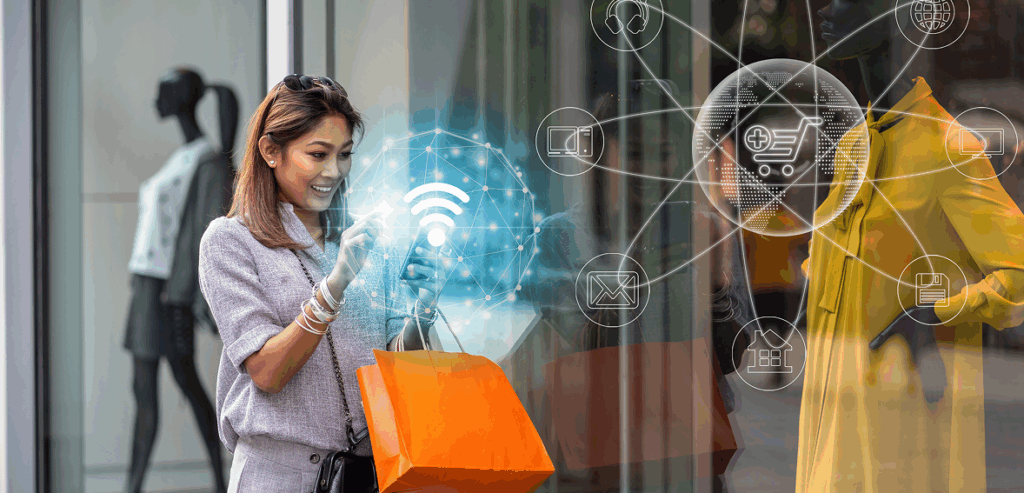
The Ultimate Guide to Building Meaningful Customer Relationships
In today’s dynamic and highly competitive marketplace, consumer engagement has become one of the most valuable assets for any organization. Businesses no longer thrive solely by offering quality products or competitive prices. Instead, long-term success now hinges on a company’s ability to engage its consumers in meaningful and lasting ways. Engagement is the glue that binds customers to brands, creating loyalty, advocacy, and long-term profitability.
Consumer engagement can be understood as the depth of emotional connection and level of interaction that a consumer has with a brand. It is not a one-time action but a continuous process of building trust, providing value, and fostering experiences that keep customers invested. This guide dives deep into the meaning of consumer engagement, explores its history and importance, highlights strategies and challenges, examines the role of technology, and looks toward the future of how companies will interact with their audiences.
What Is Consumer Engagement?
At its core, consumer engagement refers to the ongoing relationship between a customer and a brand. It goes far beyond simply purchasing a product or service. Engagement is about how consumers feel when they interact with a business, how likely they are to return, and how willing they are to advocate for the brand to others.
Engagement is often mistaken for satisfaction. While customer satisfaction is an important indicator, it merely measures how pleased a consumer is with a particular transaction. Engagement, on the other hand, measures the strength of the overall relationship. For instance, a satisfied customer may be happy with their purchase, but an engaged customer will repeatedly choose the same brand, recommend it to friends, and even defend it against competitors.
This makes consumer engagement both emotional and behavioral. Emotional engagement involves how much a customer cares about or identifies with a brand, while behavioral engagement involves actions such as repeat purchases, writing reviews, or interacting on social media. Together, they form a holistic view of how deeply a consumer is connected to a business.
The Evolution of Consumer Engagement
The way companies engage consumers has evolved significantly over time.
In earlier decades, businesses primarily relied on in-person interactions. Local shopkeepers built engagement by remembering customer preferences, greeting them by name, and offering personalized service. Word-of-mouth was the main driver of loyalty. Engagement was intimate, but its reach was limited.
The arrival of mass media in the 20th century changed the landscape. Television, radio, and print advertisements allowed businesses to reach broad audiences. However, engagement in this era was largely one-way communication. Brands spoke to consumers, but consumers had little opportunity to respond.
The digital revolution ushered in a new chapter. With the rise of websites and email, companies gained new channels to interact with consumers. Engagement became more consistent and measurable, but still lacked the immediacy of today’s standards.
The most significant transformation came with the advent of social media. Platforms such as Facebook, Twitter, Instagram, and TikTok gave consumers the power to voice opinions, share experiences, and influence others on a global scale. Engagement shifted from being company-driven to consumer-driven. Now, customers expect two-way conversations and transparency at every stage.
In the modern era, engagement is multi-channel and data-driven. Consumers expect personalization, rapid responses, and consistent experiences across digital and physical touchpoints. Companies must engage not only through marketing but also through customer service, social responsibility, and community-building efforts.
Why Consumer Engagement Matters
The importance of consumer engagement cannot be overstated. Engaged customers are more valuable than casual buyers because they:
- Make repeat purchases and remain loyal over time.
- Spend more on average compared to disengaged customers.
- Advocate for the brand, influencing friends, family, and online communities.
- Provide valuable feedback that helps businesses innovate and improve.
From a financial standpoint, retaining an engaged customer is far less expensive than acquiring a new one. Studies repeatedly show that increasing customer retention by just a few percentage points can dramatically improve profitability.
Engagement also builds resilience. When a brand faces challenges such as supply disruptions, economic downturns, or negative publicity, engaged customers are more likely to remain loyal, offering stability in uncertain times.
In today’s world, where consumers are constantly bombarded with choices, engagement is often the deciding factor that keeps them connected to a brand. It is not just a marketing tactic but a core driver of sustainable growth.
Key Elements That Drive Consumer Engagement
Several fundamental elements shape the way consumers engage with businesses.
Personalization is at the top of the list. Today’s consumers expect brands to recognize them as individuals. From personalized product recommendations to custom-tailored emails, consumers value experiences that reflect their preferences and behaviors. Personalization fosters a sense of importance and connection.
Authenticity is another powerful driver. Modern consumers are quick to identify and reject insincere messages. They expect brands to be transparent, consistent, and aligned with their stated values. Companies that practice authenticity—by being honest about their practices, owning up to mistakes, and genuinely supporting social causes—tend to inspire deeper engagement.
Convenience plays a critical role as well. In a fast-paced world, consumers are drawn to seamless, efficient experiences. Whether through fast-loading websites, easy-to-navigate apps, or hassle-free customer service, convenience enhances engagement by removing barriers.
Community is equally influential. Consumers feel more connected when they are part of a larger group that shares their loyalty to a brand. Communities can form through online forums, loyalty programs, or brand-hosted events, creating a sense of belonging.
Finally, consistent value delivery ensures engagement is sustained. Every interaction, whether a purchase, a customer support call, or a social media exchange, must reinforce the brand’s promise. Consistency builds trust, and trust builds long-term engagement.
Strategies to Build Consumer Engagement

Personalizing the Customer Journey
Consumers no longer respond to generic marketing. They expect interactions tailored to their needs and interests. Businesses can achieve this by collecting and analyzing customer data to design personalized shopping experiences, custom promotions, and individualized communication. Personalization makes customers feel valued, which strengthens engagement.
Storytelling That Connects Emotionally
Stories resonate more deeply than facts. By weaving narratives around their products, values, or customer experiences, brands can create emotional connections. For instance, a skincare company might share real stories of how its products boosted a customer’s confidence, making the brand feel relatable and inspiring loyalty.
Active Use of Social Media
Social media has become a cornerstone of consumer engagement. It allows businesses to listen, respond, and co-create with their customers. Companies must use these platforms not only for broadcasting but also for dialogue. Encouraging user-generated content, running interactive campaigns, and responding promptly to feedback all strengthen relationships.
Designing Effective Loyalty Programs
Loyalty programs, when well-structured, can keep consumers engaged for years. Beyond offering discounts, they should provide exclusive perks, early access to products, and recognition for loyal members. Programs that make customers feel special foster emotional as well as transactional loyalty.
Delivering Outstanding Customer Support
Engagement is not only about marketing—it also depends heavily on customer service. Prompt, empathetic, and solution-driven support turns negative experiences into positive ones. In many cases, how a brand handles problems determines whether a customer stays engaged or walks away.
Encouraging Participation and Co-Creation
Consumers feel more invested when they are invited to contribute. Whether through feedback surveys, product testing, or crowdsourced ideas, co-creation makes customers feel like partners rather than passive buyers. This sense of shared ownership strengthens engagement and loyalty.
Challenges in Building Consumer Engagement

While engagement is essential, it is not easy to achieve or maintain.
One challenge is information overload. Consumers are constantly bombarded with advertisements and messages, making it difficult for brands to stand out. Creativity and authenticity are needed to cut through the noise.
Balancing personalization with privacy is another challenge. While customers appreciate tailored experiences, they are also increasingly concerned about how their data is used. Brands must prioritize transparency, consent, and compliance with privacy regulations to maintain trust.
Consistency across multiple channels is also difficult to achieve. A consumer might interact with a brand through its website, social media, physical store, and mobile app. Ensuring a seamless experience across all these touchpoints requires significant coordination and resources.
Evolving consumer expectations add further complexity. Trends change rapidly, and businesses must constantly adapt to keep engagement strategies relevant. What works today may not work tomorrow.
Finally, intense competition makes engagement harder. With countless brands vying for attention, consumers are quick to switch if they feel their needs are not being met.
The Role of Technology in Consumer Engagement
Technology has become an essential enabler of engagement strategies.
Customer Relationship Management (CRM) systems help businesses track interactions, preferences, and purchase histories, allowing them to tailor experiences accordingly. Data analytics provides insights that guide decision-making and improve engagement strategies.
Artificial Intelligence (AI) is revolutionizing personalization. Machine learning algorithms predict customer needs, chatbots provide instant support, and recommendation engines create individualized shopping journeys. AI makes large-scale personalization possible.
Mobile apps have also become critical tools for engagement. They provide businesses with a direct channel to consumers, enabling push notifications, in-app purchases, and loyalty program integration.
Social media management platforms allow brands to monitor conversations, analyze sentiment, and engage effectively with audiences. They ensure that no consumer interaction goes unnoticed.
Emerging technologies like augmented reality (AR) and virtual reality (VR) are adding immersive experiences to engagement. Consumers can now try on clothes virtually or visualize furniture in their homes before purchase, deepening their connection to the brand.
Measuring Consumer Engagement
To manage engagement effectively, businesses must track it with measurable indicators.
Customer retention rates reveal how successfully a brand keeps consumers coming back. A high retention rate reflects strong engagement.
Net Promoter Score (NPS) gauges loyalty by measuring how likely customers are to recommend a brand. It serves as a simple yet powerful indicator of engagement strength.
Social media metrics such as likes, shares, comments, and mentions show how actively consumers interact with content. These indicators reveal both the breadth and depth of engagement.
Customer Lifetime Value (CLV) provides financial perspective, estimating the total revenue a business can expect from a single customer over time. A high CLV indicates strong engagement and loyalty.
Qualitative measures, such as feedback surveys and sentiment analysis, capture emotional aspects of engagement, revealing how consumers truly feel about a brand.
Future Trends in Consumer Engagement

The future of consumer engagement will be shaped by evolving technology and consumer expectations.
Hyper-personalization will become the norm. With AI and big data, businesses will move from segment-based strategies to individualized experiences tailored to each customer.
Voice assistants and conversational interfaces will expand engagement opportunities. Brands will need to optimize for voice-based interactions, providing information and services through devices like Alexa and Google Assistant.
Sustainability and purpose-driven engagement will grow in importance. Consumers increasingly prefer brands that align with their social and environmental values. Authentic efforts in these areas will strengthen emotional connections.
Community engagement will evolve further, with brands building ecosystems where consumers not only interact with the company but also with each other. Peer-to-peer communities foster deeper loyalty than brand messaging alone.
Finally, immersive technologies such as AR, VR, and the metaverse will create new engagement frontiers. Virtual stores, interactive experiences, and digital communities may redefine how consumers interact with brands in the coming decade.
Conclusion
Consumer engagement is no longer a secondary consideration—it is the foundation of long-term business success. By creating meaningful, personalized, and authentic connections, companies can build loyalty, increase lifetime value, and foster brand advocacy. Engagement transforms customers from occasional buyers into lifelong partners.
While challenges such as privacy concerns, evolving expectations, and fierce competition remain, businesses equipped with creativity, technology, and customer-centric strategies can thrive. The future of engagement will be shaped by hyper-personalization, values-driven strategies, and immersive technologies, offering unprecedented opportunities for brands to connect with consumers.
Ultimately, consumer engagement is about much more than sales. It is about trust, relationships, and creating value that endures. Businesses that embrace this mindset will not only survive but excel in a rapidly changing world.